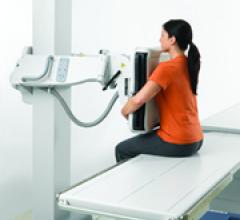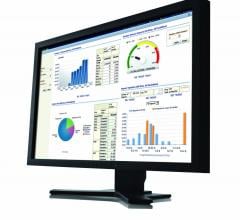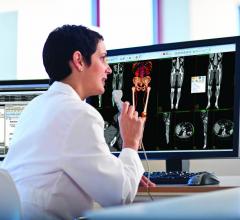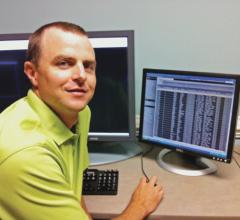If you enjoy this content, please share it with a colleague

Carestream Health
Videos
-
July 22, 2021
This is an overview of trends and technologies in radiology artificial intelligence (AI) applications in 2021. Views were shared by 11 radiologists using AI and industry leaders, which include:
• Randy Hicks, M.D., MBA, radiologist and CEO of Reginal Medical Imaging (RMI), and an iCAD Profound AI user.
• Prof. Dr. Thomas Frauenfelder, University of Zurich, Institute for Diagnostic and Interventional Radiology, and Riverain AI user.
• Amy Patel, M.D., medical director of Liberty Hospital Women’s Imaging, assistant professor of radiology at UMKC, and user of Kios AI for breast ultrasound.
• Sham Sokka, Ph.D., vice president and head of innovation, precision diagnosis, Philips Healthcare.
• Ivo Dreisser, Siemens Healthineers, global marketing manager for the AI Rad Companion.
• Bill Lacey, vice president of medical informatics, Fujifilm Medical Systems USA.
• Karley Yoder, vice president and general manager, artificial intelligence, GE Healthcare.
• Georges Espada, head of Agfa Healthcare digital and computed radiography business unit.
• Pooja Rao, head of research and development and co-founder of Qure.ai.
• Jill Hamman, world-wide marketing manager at Carestream Health.
• Sebastian Nickel, Siemens Healthineers, global product manager for the AI Pathway Companion.
There has been a change in attitudes about AI on the expo floor at the Radiological Society of North America (RSNA) over the last two years. AI conversations were originally 101 level and discussed how AI technology could be trained to sort photos of dogs and cats. However, in 2020, with numerous FDA approvals for various AI applications, the conversations at RSNA, and industry wide, have shifted to that of accepting the validity of AI. Radiologists now want to discuss how a specific AI algorithm is going to help them save time, make more accurate diagnoses and make them more efficient.
With a higher level of maturity in AI and the technology seeing wider adoption, radiologists using it say AI gives them additional confidence in their diagnoses, and can even help readers who may not be deep experts in the exam type they are being asked to read.
With a myriad of new AI apps gaining regulatory approval from scores of imaging vendors, the biggest challenge for getting this technology into hospitals is an easy to integrate format. This has led to several vendors creating AI app stores. These allow AI apps to integrate easily into radiology workflows because the apps are already integrated as third-party software into a larger radiology vendors' IT platform.
There are now hundreds of AI applications that do a wide variety of analysis, from data analytics, image reconstruction, disease and anatomy identification, automating measurements and advanced visualization. The AI applications can be divided into 2 basic types — AI to improve workflow, and AI for clinical decision support, such as diagnostic aids.
On the workflow side, several vendors are leveraging AI to pull together all of a patients' information, prior exams and reports in one location and to digest the information so it is easier for the radiologist to consume. Often the AI pulls only data and priors that relate to a specific question being asked, based on the imaging protocol used for the exam. One example of this is the Siemens Healthineers AI Clinical Pathway and Siemens AI integrations with PACS to automate measurements and advanced visualization.
AI is also helping simplify complex tasks and help reduce the reading time on involved exams. One example of this is in 3-D breast tomosythesis with hundreds of images, which is rapidly replacing 2-D mammography, which only produces 4 images. Another example is automated image reconstruction algorithms to significantly reduce manual work. AI also is now being integrated directly into several vendors' imaging systems to speed workflow and improve image quality.
Vendors say AI is here to stay. They explain the future of AI will be automation to help improve image quality, simplify manual processes, improved diagnostic quality, new ways to analyze data, and workflow aids that operate in the background as part of a growing number of software solutions.
Several vendors at RSNA 2020 noted that AI's biggest impact in the coming years will be its ability to augment and speed the workflow for the small number of radiologists compared to the quickly growing elder patient populations worldwide. There also are applications in rural and developing countries were there are very low numbers of physicians or specialists.
Related AI in Medical Imaging Content:
AI Outperforms Humans in Creating Cancer Treatments, But Do Doctors Trust It?
VIDEO: Artificial Intelligence For MRI Helps Overcome Backlog of Exams Due to COVID
How AI is Helping the Fight Against Breast Cancer
VIDEO: Use of Artificial Intelligence in Nuclear Imaging
3 High-impact AI Market Trends in Radiology at RSNA 2019
Photo Gallery of New Imaging Technologies at RSNA 2019
VIDEO: Editors Choice of the Most Innovative New Radiology Technology at RSNA 2019
Study Reveals New Comprehensive AI Chest X-ray Solution Improves Radiologist Accuracy
VIDEO: Real-world Use of AI to Detect Hemorrhagic Stroke
The Radiology AI Evolution at RSNA 2019
Eliminating Bias from Healthcare AI Critical to Improve Health Equity
VIDEO: FDA Cleared Artificial Intelligence for Immediate Results of Head CT Scans
Building the Future of AI Through Data
Integrating Artificial Intelligence in Treatment Planning
Selecting an AI Marketplace for Radiology: Key Considerations for Healthcare Providers
Artificial Intelligence Improves Accuracy of Breast Ultrasound Diagnoses
Artificial Intelligence Greatly Speeds Radiation Therapy Treatment Planning
WEBINAR: Building the Bridge - How Imaging AI is Delivering Clinical Value Across the Care Continuum
AI in Medical Imaging Market to Reach $1.5B by 2024
VIDEO: AI-Assisted Automatic Ejection Fraction for Point-of-Care Ultrasound
5 Trends in Enterprise Imaging and PACS Systems
VIDEO: Artificial Intelligence to Automate CT Calcium Scoring and Radiomics
Scale AI in Imaging Now for the Post-COVID Era
VIDEO: Integrating Artificial Intelligence Into Radiologists Workflow
Northwestern Medicine Introduces Artificial Intelligence to Improve Ultrasound Imaging
Find more artificial intelligence news and video
March 05, 2019Cree Gaskin, M.D., professor, vice chair and associate chief medical officer, University of Virginia Health System, explains how new technology can be used to improve radiology reports without additional workload. His health system uses a new generation integrated RIS/PACS system that allows URL links and new graphical data presentations to be embedded into radiology reports to make them more interactive. This information can include quantifications, key images from the exam, access to full datasets, 3-D reconstructions and ability to immediately link to prior exams. He spoke is sessions on this topic at the 2019 Healthcare Information Management and Systems Society (HIMSS) conference.
Look through a photo gallery of other new technologies at HIMSS19.
February 28, 2019Andrew Deutsch, M.D., MBA, chairman and CEO of Renaissance Imaging Medical Associates (RIMA), an affiliate of Radiology Partners, describes RIMA’s use of an artificial intelligence (AI) based worklist workflow to manage reads across 70 sites and load balance between 120 radiologists. He spoke in sessions on this topic at the 2019 Healthcare Information Management and Systems Society at (HIMSS) conference.
Deutsch, a nationally respected expert in skeletal radiology and magnetic resonance imaging (MRI) and in addition to his roles at RIMA, serves as medical director of the imaging departments at Northridge Hospital Medical Center and Valley Presbyterian Hospital.
Look through a photo gallery of other new technologies at HIMSS19.
Find other news and video from HIMSS 2019.
Related AI Coverage:
VIDEO: Editor’s Choice of the Most Innovative New Artificial Intelligence Technologies at RSNA 2018
VIDEO: Technology Report: Artificial Intelligence
How to Market Healthcare Artificial Intelligence Software
Selecting an AI Marketplace for Radiology: Key Considerations for Healthcare Providers
January 16, 2017Digital radiology is on the move like never before with the Carestream DRX-Revolution Mobile X-ray System. It is the industry’s first mobile X-ray system with a fully automatic collapsible column.
December 06, 2016Carestream offers a choice of deployment models to match your fiscal strategy — with low cost and low financial risk. MyVue Center saves money by reducing capital and operational costs for printers, CD/DVD publishing and maintenance.
Learn about patient-enabled imaging in this brief video.
September 19, 2016See how Carestream's exclusive Web Portal and personalized dashboard can give users peace of mind.
June 08, 2016Carestream has changed the DR game and puts you in control of the move to digital. See how the X-Factor lets you make the most of your capital investment. It meets today's needs and positions you for growth.
March 21, 2016Examples of patient engagement technologies for medical imaging to meet health IT Stage 3 Meaningful Use requirements. Discussion includes examples from the expo floor at HIMSS 2016 and Ascendian Healthcare Consulting CEO Shawn McKenzie explaining ways radiology can leverage technology to engage patients with images, reports and radiation dose records.
March 11, 2016Examples of technologies on the market and a discussion of what to look for in PACS and CVIS workflow efficiencies with Ascendian Healthcare Consultant Jef Williams. Editor Dave Fornell takes viewers on a tour of some of the key workflow improvements offered by health IT vendors in their software on the expo floor at Healthcare Information Management and Systems Society (HIMSS) 2016 meeting.
Related Content:
6 Key Health Information Technology Trends at HIMSS 2019
Technology Report: Enterprise Imaging
VIDEO: How to Build An Enterprise Imaging System
Enterprise Imaging 2018: Balancing Strategy and Technology
Three Resolutions Worth Keeping for a More Data-driven Radiology Practice
November 24, 2015The DRX Plus 3543 Detector is faster, lighter and more reliable, as compared to the DRX-1 Detectors, and is IPX37 fluid resistant. The DRX Detector can be shared across all DRX products. Watch video now.
August 07, 2015ITN Editor Dave Fornell shares his choices for some of the most innovative new technology on the show floor at the 2015 AHRA meeting in Las Vegas.
July 01, 2015May 06, 2015December 18, 2014Carestream introduced the Touch ultrasound system at RSNA 2014. This premium system uses an all- touchscreen interface and is the first of a series of new ultrasound systems Carestream plans to roll-out over the next couple years, each using a similar touchscreen interface system.
July 14, 2014Todd Kranpitz, Executive Director of Radiology at Iowa Health, Des Moines, shares feedback from his health system on the portable imaging unit, the DRX Revolution - highlighting the wireless detector and collapsible column. He also discusses how adding a DRX-Revolution in surgery could replace c-arm technology. Hear Todd's thoughts about the transformation underway in radiology and the importance of the specialty becoming educators with other providers in the care continuum.
February 03, 2014Carestream's Vue family includes RIS/PACS/archiving as well as vendor-neutral archives, physician and patient portals that streamline workflow for radiologists, IT professionals and administrators. These systems also elevate clinical and business intelligence across the enterprise and enable better informed and collaborative decision making. One example is Carestream's Vue Motion Physician Portal. Vue Motion gives physicians access to all imaging data at the point of diagnosis quickly and easily from virtually all mobile devices such as the iPad. And it is simple to deploy, with no dedicated training required. Vue Motion's vendor-neutral functionality means you don't have to change departmental workflow to offer this new capability. Knowing how imaging data is critical to the care continuum matters.
September 19, 2012The Carestream DRX-Revolution is a mobile X-ray system on wheels powered by a wireless DRX detector.
September 19, 2012See the versatility of the DRX Evolution room with the wireless DRX detector.
September 19, 2012Carestream is changing the DR game and putting you in control of the move to digital.
September 19, 2012Carestream's DRX - transportable / field portable X-ray unit is designed and tested for the rigorous conditions of military, disaster and remote locations.
September 19, 2012Jeannie Patterson, PSW at Hamilton General Hospital, explains some of the benefits of the Carestream DRX-Revolution mobile X-ray system, including its compact size, easy detector bagging, storage for markers, gloves, bags and wipes, and the swivel image head.
RELATED CONTENT
FeatureCarestream Health added linear tomography and asymmetric collimation capabilities to its DRX-Evolution and will show its DRX-Revolution mobile X-ray system at AHRA 2012, which is now shipping worldwide.
TechnologyAugust 16, 2012 — Carestream’s new Vue Beyond for radiology delivers a real-time view of departmental workflow that can help radiology administrators improve productivity and profitability. The Vue Beyond business intelligence and reporting dashboard, which is currently available for order, shows a real-time queue of studies waiting for report, report turnaround time per radiologist and productivity levels for every member of the imaging department.
NewsAugust 15, 2012 — Carestream’s Vue radiology information system (RIS) version 11 is now 2011/2012 compliant and was certified as a complete EHR (electronic health record) on July 27, 2012, by the Certification Commission for Health Information Technology (CCHIT), an ONC-ATCB in accordance with the applicable eligible provider certification criteria adopted by the Secretary of Health and Human Services.
TechnologyJuly 24, 2012 — Carestream launched its new Vita XE CR imaging system, which is now available for order worldwide. The tabletop computed radiography (CR) system produces diagnostic quality images at a speed of 60-plus plates per hour and is an ideal fit for smaller hospitals, imaging centers, clinics and private practices.
NewsJuly 20, 2012 — Most healthcare providers are in the early stages of forming an enterprise imaging strategy, which will enable getting the right image to the right place at the right time, according to a new KLAS study, “Enterprise Imaging 2012: Provider's Strategies and Insights.”
NewsJuly 6, 2012 — Carestream Health showcased works-in-progress lesion management 3-D tools on its Vue PACS (picture archiving and communications system) workstation at the annual “Workstation Face-Off,” held June 18 in San Francisco as part of the annual International Symposium on Multidetector-Row CT.
TechnologyJuly 6, 2012 — New software features for three of Carestream’s DRX digital radiography systems can enhance the quality of pediatric and ICU imaging, boost productivity and offer new print options. These features are available for order and will be shipping by mid-July with new DRX-1 Systems, DRX-Mobile Retrofit Kits and DRX-Transportable Systems. Existing customers will be able to upgrade existing systems with new software.
NewsJune 25, 2012 — KLAS released the 2012 Best in KLAS Awards: Medical Equipment and Infrastructure report, which details what end-users think about imaging systems from specific vendors. The report recognizes leaders in individual medical equipment market segments as Best in KLAS, including digital X-ray, CT, MRI (1.5T and 3.0T), ultrasound and mammography.
TechnologyVue Archive supports diverse data formats to help healthcare providers consolidate multiple “ologies” in a system-neutral repository. Vue Motion — a vendor-neutral, zero-footprint viewer cleared by the U.S. Food and Drug Administration (FDA) for iPad review — delivers enterprise access to images and reports. Vue Connect intelligently indexes disparate radiology information systems (RIS)/PACS for seamless information exchange as an on-site system or a cloud service. These systems will be featured at SIIM.
Feature | Michael Brown, M.D.Efficient sharing of data and images is essential for multi-site healthcare systems and radiology groups that read for multiple sites or facilities. In today’s world of consolidation, that represents the majority of radiology service providers. When it came time to replace our PACS, we developed an eight-point checklist for what we wanted.
© Copyright Wainscot Media. All Rights Reserved.Subscribe NowE-newsletter Subscription form























 August 17, 2012
August 17, 2012 






